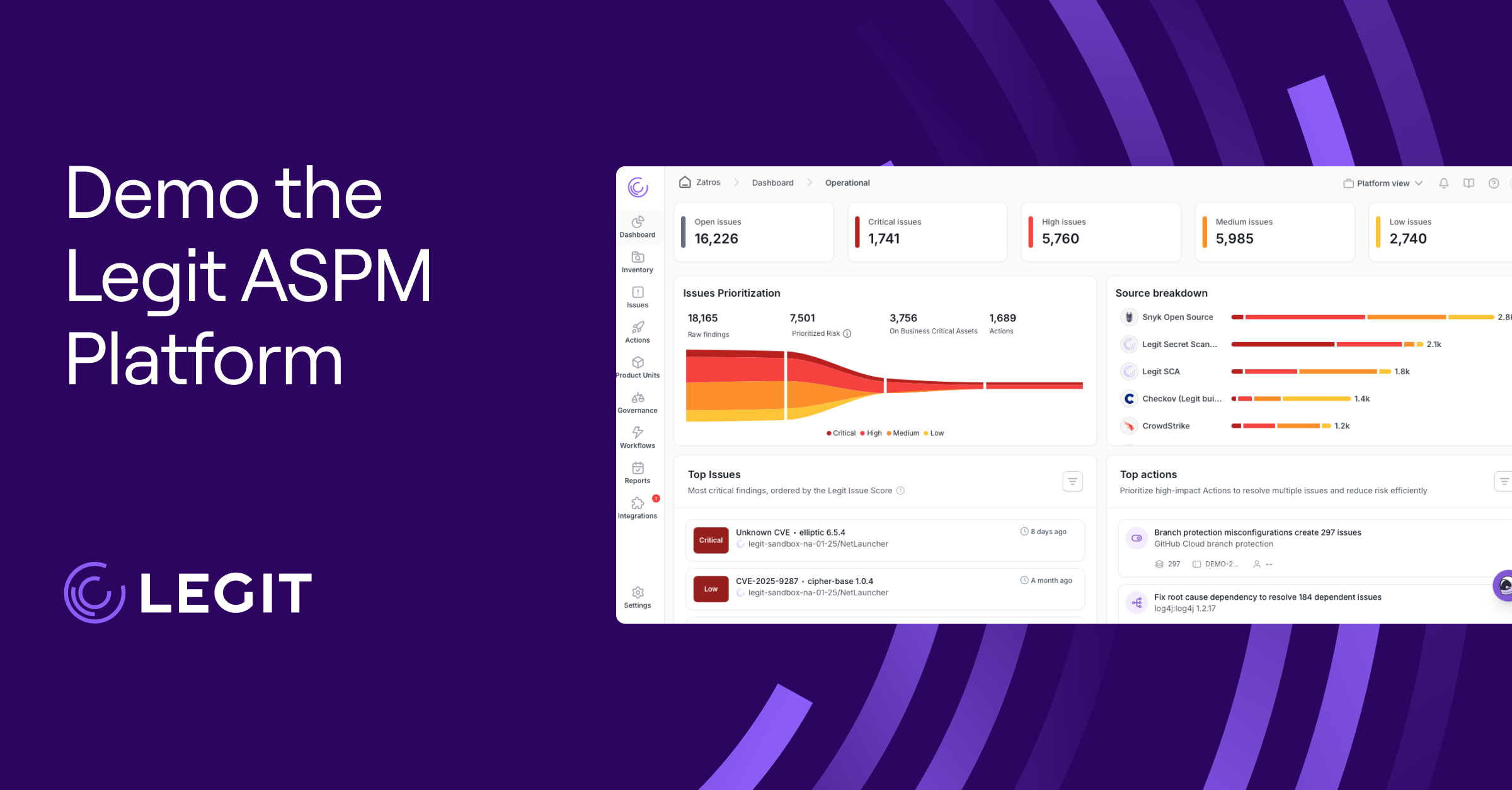Security threats escalate so quickly that teams rarely have time to investigate every issue manually. Whether you’re protecting financial systems, customer-facing apps, or internal infrastructure, one thing’s for sure: Speed and accuracy can make or break your remediation efforts.
AI-powered remediation adds automated context and real-time prioritization to the process. It allows teams to resolve risks faster—and with greater confidence. In this guide, we’ll explain AI remediation, how it works, and how it’s changing the way organizations respond to evolving threats.
What Is AI Remediation?
AI remediation detects, analyzes, and remediates security issues faster and more accurately than manual methods. Rather than relying on ticket-based workflows, it delivers actionable, contextual fixes tailored to each risk and environment. Developers no longer have to sift through generic alerts—AI remediation tells them exactly what needs fixing.
This is especially useful in generative AI code remediation, where insecure code can enter through automated generation tools or shared libraries. These large language models (LLMs) often introduce vulnerabilities like missing input validation, weak authentication logic, and absent protections such as Cross-Site Request Forgery (CSRF) tokens or security headers.
While security teams usually know what needs attention, AI-assisted vulnerability remediation often falls to development teams. Legit’s Application Security Posture Management (ASPM) platform identifies where AI-generated code exists across cloud-native environments. Its AI-assisted capabilities translate complex findings into focused, ready-to-execute actions, automating the process of identifying the issue and assigning ownership. This makes it easier to map out a clear path to resolution, allowing security and development teams to work faster and with less friction.
AI Remediation’s Core Capabilities
AI remediation solves a problem that often slows momentum: turning detection into action. Traditional tools flag vulnerabilities quickly, but acting on them—especially at scale—gets tricky. Developers end up digging through vague tickets or rewriting the same patch across multiple repos. AI-powered remediation changes that. It generates contextual, environment-specific solutions as soon as a vulnerability surfaces, so teams can act without wasting time on research or guesswork.
This shift reflects how more organizations are using AI across the cybersecurity lifecycle—not just to detect threats but to also resolve them. Leading platforms now trace issues back to their source, whether in code, infrastructure-as-code (IaC), or misconfigured cloud settings, and feed remediation guidance directly into the tools teams already use.
Sometimes, that means automatically generating pull requests or suggesting inline code changes right inside CI/CD pipelines. By applying fixes at the source, AI-assisted vulnerability remediation helps teams progress while improving overall security without slowing delivery.
And it’s not just for engineering-heavy teams. In high-stakes sectors like financial services, where accuracy and compliance are critical, AI remediation provides actionable, traceable steps that allow security, compliance, and IT operations teams to meet security goals and pass audits.
At a broader level, AI remediation improves collaboration between security and development. Instead of operating in silos, both teams work from a shared context. The system routes each issue to the right owner, links changes to the environment they affect, and ranks issues based on real-world risk. The whole process is faster, with more focus and fewer bottlenecks.
How Does AI Remediation Help in Cybersecurity?
AI remediation strengthens cybersecurity and reduces response time. And that keeps development moving without introducing unnecessary hurdles. Here’s a closer look at how it works:
Automates Remediation at Scale
AI remediation eliminates manual triage by automatically generating actionable guidance across environments. Developers don’t have to leave their IDE, CI/CD pipeline, or pull request interface. Instead, the system surfaces exactly what they need to address directly inside the tools they already use.
Detects Unknown Vulnerabilities
AI-generated code
can introduce flaws that developers don’t always catch. Legit’s AI-powered capabilities surface these risks before they reach production, flagging issues tied to LLMs, GenAI tools, or embedded AI assistants. This gives teams time to review and validate AI-driven findings and vet code before it ships.
Reduces Exposure Windows
When AI detects an issue, it recommends a response in real time to shrink the window attackers have to strike. This speed keeps teams ahead of threats without slowing release cycles. It also lowers the chance of unpatched vulnerabilities lingering in production, where exploits can cause far greater damage.
Strengthens Developer Confidence
Every AI recommendation is context-aware, built on the understanding of the codebase and its environment. As developers see these suggestions consistently work, it reinforces secure coding habits and builds trust in the AI’s guidance over time.
Frees Up Security to Focus On Strategy
Instead of manually validating every alert or chasing low-priority issues, AppSec teams can focus on strategic goals. AI handles the noise, such as correlating scans and remediating low-hanging risks, so teams concentrate their security resources on the most critical vulnerabilities.
Get the Best AI Remediation With Legit Security
Legit Security brings AI-powered remediation to life through its AI-native ASPM platform. It connects findings to the right owners, prioritizes them based on real risk, and delivers actionable, context-rich guidance directly in the tools your team already uses. Whether flagging a misconfigured IaC template or flawed AI-generated code, Legit turns detection into resolution without slowing you down.
By embedding intelligent remediation into modern development workflows, Legit reduces friction between security and engineering. Fixes can also be auto-suggested in pull requests, enforced through policy-based guardrails, or delivered through automation—all with full traceability. The result is faster resolution, better collaboration, and fewer unresolved vulnerabilities.
Book a demo
to see how Legit can help you remediate at scale.
AI-Driven Remediation FAQs
How Does Legit Support AI Discovery Across Development?
Legit AI-powered ASPM maps where and how AI-generated code appears throughout the development lifecycle. That includes code from AI assistants, shared LLMs, or integrated GenAI tools. Once detected, Legit adds context: It shows who introduced the code, where it lives, and whether it aligns with your security policies. These actionable insights allow teams to act early, while automated guardrails catch and block risky changes before they reach production.
How Does Legit Differ From Other ASPM and AI-SPM Alternatives?
Many platforms surface security issues, but they often stop there. Legit goes further by correlating data across the entire development environment: code, infrastructure, and cloud. It pinpoints what matters most and connects each finding to real remediation. With features like root cause remediation, Legit uncovers single fixes that resolve multiple vulnerabilities, reducing noise so teams can remediate at scale.
What Makes Legit’s AI Remediation Useful to Developers?
Remediation guidance isn’t helpful if it creates more work. Legit integrates suggestions directly into the tools developers already use, like pull request workflows and code editors, so AI-generated recommendations appear naturally within their flow. Every recommendation is contextual, tied to risk scores, and ready to apply. By avoiding unnecessary review cycles, there’s less back-and-forth and faster resolution without disrupting delivery pipelines.
Download our new whitepaper.


